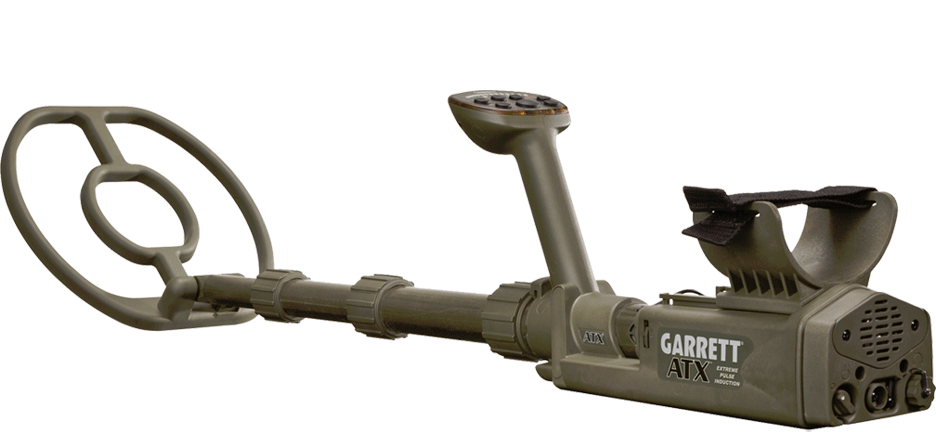The ATX is very sensitive to gold (and tweaked to do so). It really shines in areas where there is known gold to exist, and will get substantially better depth then a VLF gold detector. It also handles extremely high mineralized areas and hot rocks where a lot of other detectors struggle. It will pick up tiny gold and larger gold. It is a very sensitive detector, and even more so when run in non-motion mode. It can be ground balanced and will also scan a preferred frequency to use should there be EMI issues in an area.
Now, all PI detectors are very sensitive to iron, and you really can't eliminate it. The ATX does have an iron ID, giving a low grunt on iron. This is accurate to about 6" on coin sized targets with the 10" x 12' COIL, deeper on larger sized targets and less on smaller targets. A PI does not discriminate at all like a VLF detector.
So, where are a PI's strengths? Looking for gold in gold bearing areas. Keep in mind that you will be digging up 22 shells, bullets and tiny nails. However, if the coil goes over a tiny flake of gold or larger nugget, you will get a signal. I have done very well with gold rings hunting areas which had been hunted mostly with VLF detectors, with the bonus that usually most of the junk has also been removed by those hunters.
Here's a link to some ATX Videos - http://www.garrett.com/hobbysite/hbby_atx_videos_en.aspx


